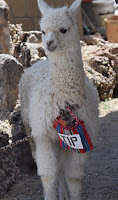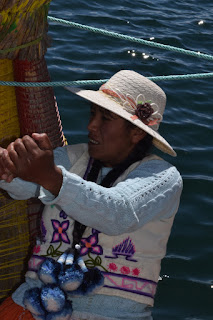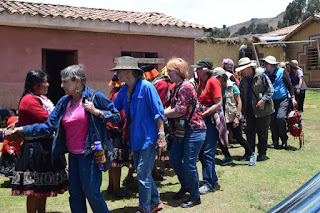We arrived late to our hotel, the Casa
Bella Boutique Hotel in Miraflores neighborhood. We were beat. We
slept in, and had breakfast with a couple from Guelph, Ontario. They
were surprised that Sandi knew their town. They had missed their
flight, as the flight time had changed without them being notified.
We and they decided to pay for an additional night to allow ourselves
a place to rest before our late flight back to the USA. We changed
to the Hotel Faro nearby. We went to the Cathedral on the main
plaza, which was closed as part of a ceremony to had over new fire
trucks and ambulances to the firemen. The Cathedral was somewhat
interesting, really a museum. We liked better the working church of
Santo Domingo, where we saw petitions that people had put into the
glass boxes that held statues, a kind of mailbox to God.
Unfortunately, we ran out of time to see the museum in Santo Domingo.
We took a taxi back to the hotel, and rested some. We then took a
taxi to the Museo Larco, which was quite wonderful.
 |
| The beautiful grounds of the Larco |
The Museo Larco is a private museum, a
collection of an anthropologist and his wealthy father. The
artifacts were of high artistic quality, and the explanatory text was
on the big picture, rather than giving us detailed information about
each artifact. Rather than focus on the well known Inka culture, it
covered many of the cultures that preceded that Inka, such as the
Moche, Nazca, and Pucara. We got a sense of the common elements
of the native religions. The textiles and metal work were
especially impressive. This was an excellent museum, with beautiful
grounds. We had a snack in their restaurant, and then headed back to
the hotel.
Hilary picked us up at the hotel, and
took us to the airport. Our flight left Lima at 1 AM. The flight
to Atlanta was routine; we arrived at about 8 AM, and headed for the
Delta Club to await our flight to Denver.

































